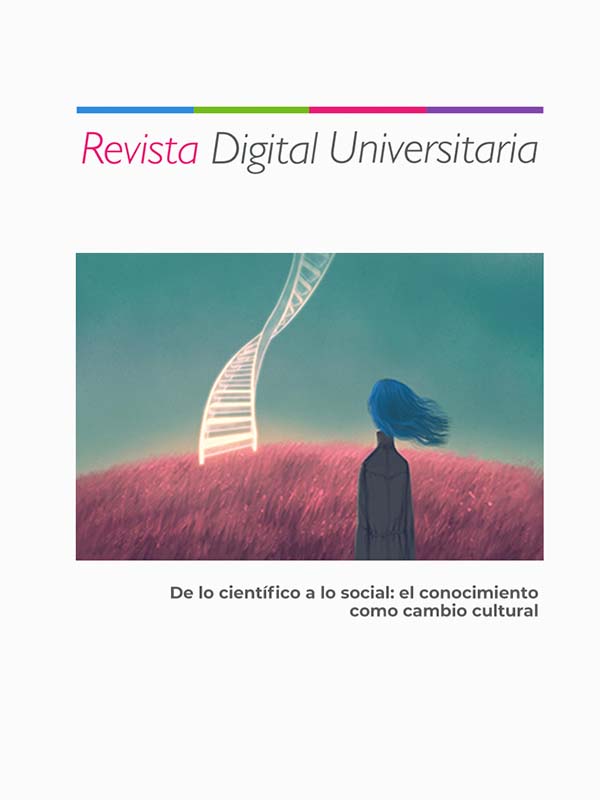La dualidad de la tortuga de orejas rojas: mascota carismática y especie invasora
DOI:
https://doi.org/10.22201/ceide.16076079e.2025.26.1.9Palabras clave:
reptiles, mascotas, especies exóticas, hábitats acuáticosResumen
Las tortugas son organismos carismáticos, por lo que son muy buscadas como mascotas. La especie más vendida a nivel mundial es la tortuga de orejas rojas (Trachemys scripta elegans), que es considerada entre las 100 más invasivas en todo el mundo. La falta de información ha llevado a su liberación en hábitats naturales convirtiéndose en animales exóticos invasores. La presencia de la tortuga en México es preocupante, ya que se desconoce si en los hábitats acuáticos naturales hay presencia de poblaciones viables ya establecidas. Debido a que México tiene una gran diversidad de tortugas, resulta importante evaluar la situación actual de esta especie invasora y su influencia en la diversidad de tortugas en el país.
→ Leer más
Citas
Aresco, M. J. (2010). Competitive interactions of two species of freshwater turtles, a generalist omnivore and an herbivore, under low resource conditions. Herpetologica, 66(3), 259-268. https://doi.org/10.1655/09-004.1
Arthington A. H., Naiman R. J., McClain M. E., Nilsson C. (2010). Preserving the biodiversity and ecological services of rivers: new challenges and research opportunities. Freshwater Biology. 55(1), 1-16. https://doi.org/10.1111/j.1365-2427.2009.02340.x
Becerra, E., Rico Y., Borja, J. M., Rodríguez-López, B., y Gutierrez-Martinez, A. (2024). First record of the invasive Red-eared slider (Trachemys scripta elegans) in the Nazas River, Durango Mexico. Herpetology Notes, 17, 57-60. https://www.biotaxa.org/hn/issue/view/10486
Cadi, A., y Joly, P. (2003). Competition for basking places between the endangered European pond turtle (Emys orbicularis galloitalica) and the introduced redeared slider (Trachemys scripta elegans). Canadian Journal of Zoology, 81(8),1392-1398. https://doi.org/10.1139/z03-108
Cadi, A., y Joly, P. (2004) Impact of the introduction of the red-eared slider (Trachemys scripta elegans) on survival rates of the European pond turtle (Emys orbicularis). Biodiversity and Conservation, 13, 2511-2518. https://doi.org/10.1023/B:BIOC.0000048451.07820.9c
Campbell, L. (2002). Contemporary Culture, Use, and Conservation of Sea Turtles. En P. Lutz., J. Musick. y J. Wyneken (Eds.), The Biology of Sea Turtles, Volume ii (pp. 301-331). crc Press.
conabio. (2023, 27 de mayo). Especies exóticas invasoras. Biodiversidad Mexicana. https://tinyurl.com/bdcwbxxt
Dudgeon, D., Arthington, A., Gessner, M., Kawabata, Z., Knowler, D., Leveque, C., Naiman, R., Prieur-Richard, A., Soto, D., Stiassny, M., Sullivan C. (2006). Freshwater biodiversity: importance, threats, status and conservation challenges. Biological Reviews, 81(2), 163-182. https://doi.org/10.1017/S1464793105006950
Easter, T., y Carter, N. (2024). Analysis of 20 years of turtle exports from the us reveals mixed effects of cites and a need for better monitoring. Conservation Science and Practice, 6(4), e13092. https://doi.org/10.1111/csp2.13092
Global Invasive Species Database (gisd). (2023, 24 de abril). Species profile: Trachemys scripta elegans. https://tinyurl.com/452773zy
Guevara Chumacero, M., Pichardo Fragoso, A., y Martínez Cornelio, Monserrat Martínez. (2017). La tortuga en Tabasco: comida, identidad y representación. Estudios de Cultura Maya, 49, 97-122. https://doi.org/10.19130/iifl.ecm.2017.49.758
Kopf, R. K., Finlayson, C. M., Humphries, P., Sims, N. C., y Hladyz, S. (2015). Anthropocene baselines: assessing change and managing biodiversity in human dominated aquatic ecosystems. BioScience, 65(8), 798-811. https://doi.org/10.1093/biosci/biv092
Lamm, S. H., Taylor, A. Jr., Gangarosa, E. J., Anderson, H. W., Young. W., Clark, M. H., y Bruce, A. R. (1972). Turtle-associated salmonellosis. I. An estimation of the magnitude of the problem in the U.S., 1970–71. American Journal of Epidemiology, 95(6), 511-517. https://doi.org/10.1093/oxfordjournals.aje.a121418
Lovich, J., y Gibbons, W. (2021). Turtles of the world, a guide to every family. Princeton University Press.
Legler, J., y Vogt, R. (2013). Turtles of Mexico: Land and Freshwater forms. University of California Press.
Oberdorff, T. (2022). Time for decisive actions to protect freshwater ecosystems from global changes. Knowledge & Management of Aquatic Ecosystems, 423. https://doi.org/10.1051/kmae/2022017
Pearson, S. H., Avery, H. W., y Spotila, J. R. (2015). Juvenile invasive red-eared slider turtles negatively impact the growth of native turtles: Implications for global freshwater turtle populations. Biological Conservation, 186, 115-121. https://doi.org/10.1016/j.biocon.2015.03.001
Petco. (s.f.). Red-Eared Slider Care Sheet. https://tinyurl.com/3bh8nskb
Strayer D. L., y Dudgeon, D. (2010). Freshwater biodiversity conservation: recent progress and future challenges. Journal of the North American Benthological Society, 29(1), 344-358. https://doi.org/10.1899/08-171.1
Williams, T. (1999). The terrible turtle trade. Audubon 44, 101(2),44-51. New York Turtle and Tortoise Society. https://nytts.org/asia/twilliams.htm
Publicado
Número
Sección
Licencia
Derechos de autor 2025 Revista Digital Universitaria

Esta obra está bajo una licencia internacional Creative Commons Atribución-NoComercial-CompartirIgual 4.0.

Revista Digital Universitaria es editada por la Universidad Nacional Autónoma de México se distribuye bajo una Licencia Creative Commons Atribución-NoComercial 4.0 Internacional. Basada en una obra en http://revista.unam.mx/.










